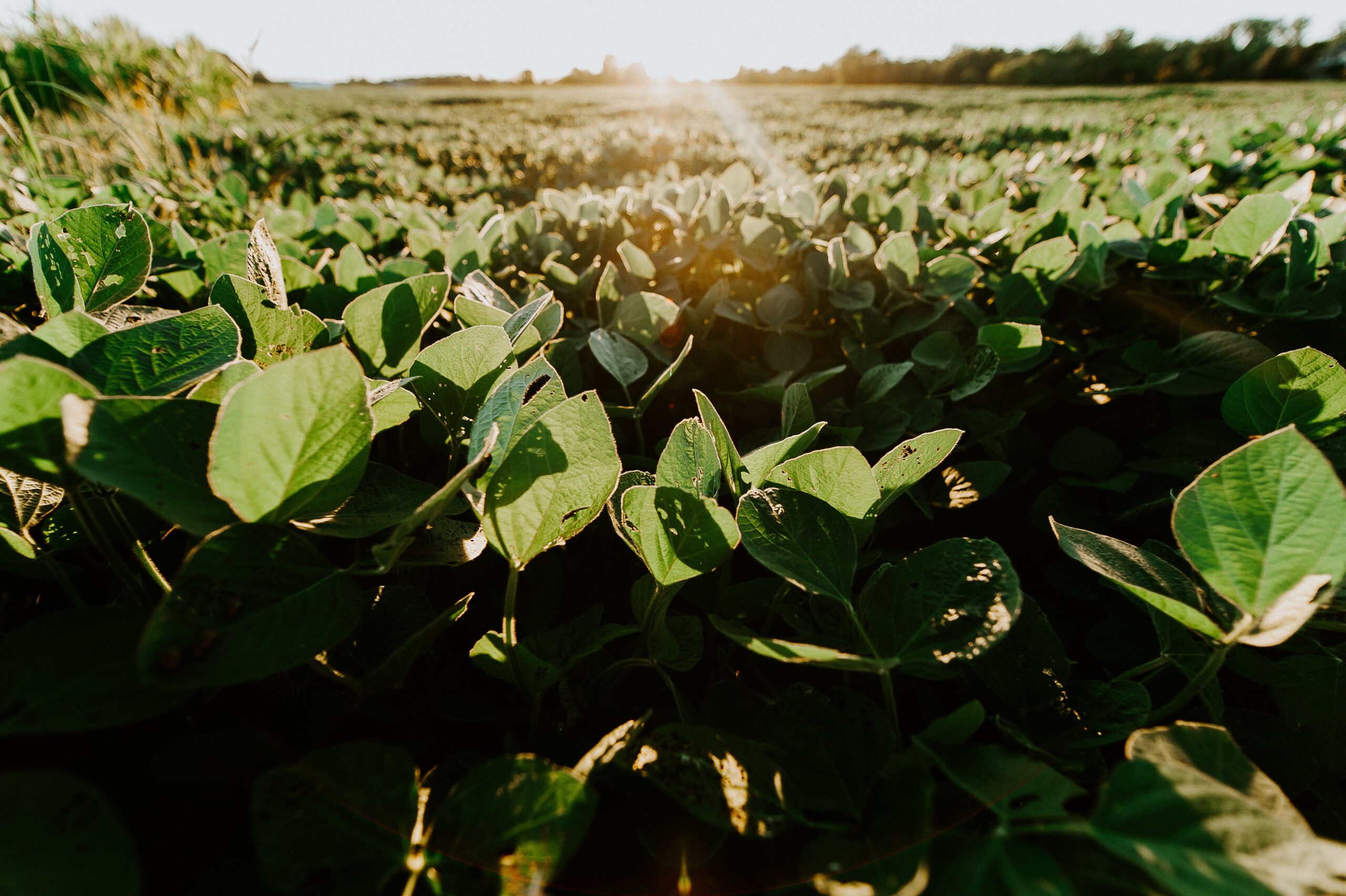Crop Update as of August 2019

By Kayla Keyser
After a rough spring, Ohio farmers are somewhat divided in their experiences this year. While some farmers are tending to business as usual, a large number of farmers in Northern Ohio, especially in the far Northwest counties, have been changing things up out of necessity. With an unprecedented amount of rain keeping farmers out of their fields, many have spent the summer navigating seed returns, crop insurance claims, and whether they should plant a cover crop, forage crop, or do nothing with prevent plant acres.
Nathan Eckel, an Ohio Soybean Council (OSC) board member who farms in Wood and Henry counties, is reporting that about 80 percent of his beans look really good at this point in the year with the 3.6 maturity variety doing the best. Most have been post-sprayed and, without an early frost, should have a good harvest. However, there are still some fields of short beans that are already starting to blossom, which Eckel notes is not a good sign for early August.
The soybeans seem to be the bright spot this year since Eckel had more than 500 acres of corn he was prevented from planting, and what did get planted has uneven stands as it’s starting to tassel. Late planted corn intended for silage is actually looking the nicest, which Eckel credits to more ideal soil conditions when it was planted, also noting this is the first year he has even planted corn in July.
In spite of this year’s many challenges, Eckel has found it afforded him the opportunity to try something different. He recently finished planting about 120 acres of oats for himself along with custom seeding nearly 500 more acres in the area. Hoping for adequate rain to get them up and growing, they will be used for forage. The rest of those acres he plans to plant to wheat since there’s not likely to be an opportunity after this fall’s harvest. He’s hoping for an early wheat harvest next year to allow for double crop beans. Overall, he’s making an effort to keep the ground covered and prevent fallow ground syndrome for next year’s corn crop.

Farther south, Scott Metzger, a board member for both OSC and the Ohio Soybean Association (OSA), who farms in Ross and Pickaway counties, is grateful that crops seem to be only a month behind the normal stage for recent years. The more gravel-based soil in the area drained well and even the heavier soils fared okay for April plantings. However, crops planted in May on some heavier soils have more noticeable areas of drowned out crops.
Despite those drowned out pockets, plants are looking good with a majority of first crop beans podding up fine at this stage. Double crop beans are looking nice as well but need some continued moisture and additional heat units to finish strong.

Metzger reports an average wheat crop harvest and outstanding crop for malting barley over the summer. Meanwhile, corn has begun silking and is looking fair, but uneven in fields that have spots where water laid in the Spring. Slow root growth has also added some stress to the crop. In contrast to Northern Ohio, Metzger notes only 2-3 percent of fields being prevented from planting which is not that unusual in any given year.
Despite increased moisture, disease pressure remains light with some preventative aerial applications on some acres that are more susceptible. As long as the frost holds off until the end of October, Metzger is optimistic looking toward this year’s harvest, and thankful as he realizes he is one of the lucky ones in Ohio this year.
